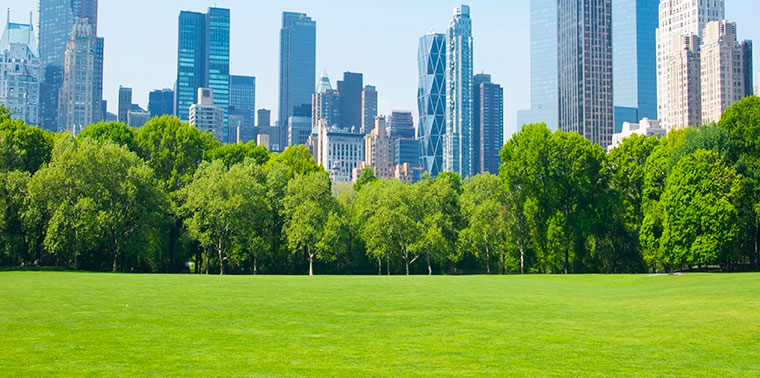September 8, 2015 — With cities poised to add 2.5 billion more people by 2050, now is a perfect time to get strategic about urban design. One of the big questions planners face is the best way to accommodate both built environments and natural settings, which provide important services such as making oxygen, cleansing water, absorbing noise, moderating summer heat, adding beauty and providing habitat for animals and plants. Can we get the biggest overall benefit by interweaving buildings and roadways with small, dispersed patches of nature — “land sharing” — or by setting aside large expanses of green space surrounded by intensive development — “land sparing”?
To find an answer, researchers from the United Kingdom and Japan looked at how well cities with a range of development strategies were able to provide each of nine urban ecosystem services — carbon storage, water infiltration, human well-being, agricultural production, pollination, pest control, noise reduction, air purification and temperature regulation. They then categorized these ecosystem services as “winners” or “losers” under various points along the compact-development-to-suburban-sprawl continuum.
Their results, reported in the latest issue of Frontiers in Ecology and the Environment, indicate that large, contiguous stretches of natural land are critical for maintaining most of the ecosystem services. However, they also showed that interspersing nature with homes, businesses and roadways has some value, particularly for maintaining the sense of personal well-being associated with exposure to nature. The researchers observed in addition that the built environment can be modified in ways that make it function more like open space in its ability to provide ecosystem services — by incorporating green roofs and permeable pavement, for instance.
“Land sparing is clearly necessary if ecosystem services are to be adequately represented in urban landscapes,” they wrote. “That said, when considering the flow of ecosystem services, arguably some land sharing is required if people are to see the health and well-being benefits provided by urban green space.”
The researchers noted that more work is needed to identify optimal size for green spaces. They also recommended top-down, policy-led planning as the best way to maximize the benefits of green spaces as cities grow. ![]()
Ensia shares solutions-focused stories free of charge through our online magazine and partner media. That means audiences around the world have ready access to stories that can — and do — help them shape a better future. If you value our work, please show your support today.
Yes, I'll support Ensia!
